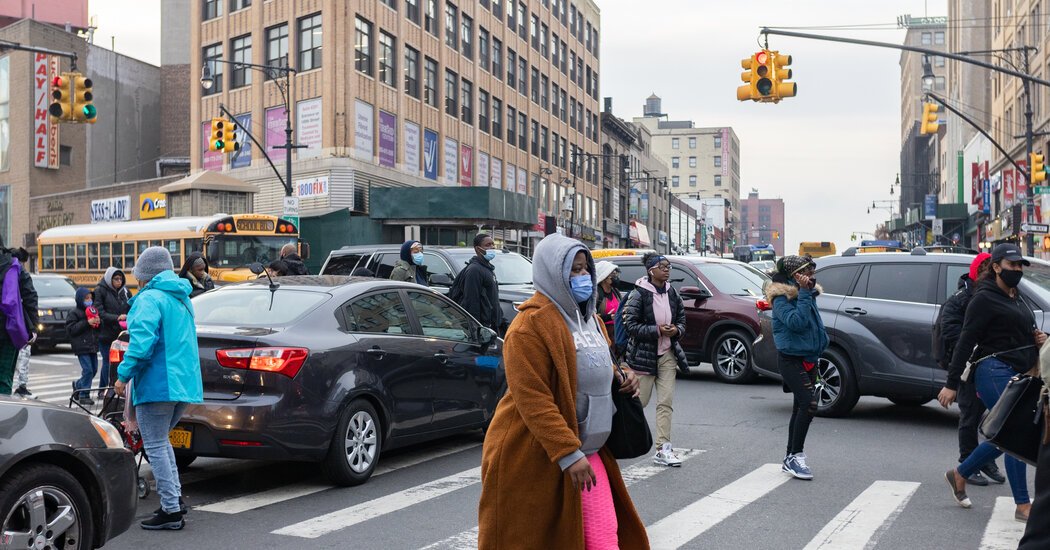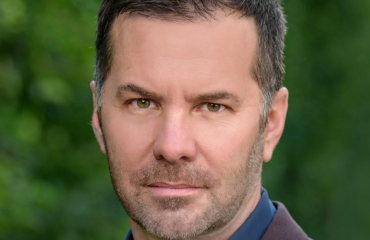NYC Traffic: How Neighborhoods Outside of Manhattan Are Feeling the Pain – The New York Times
Advertisement
Supported by
With transit use lagging and truck deliveries and car ownership rising, congestion across New York City is likely to be worse after the pandemic than it was before.
Send any friend a story
As a subscriber, you have 10 gift articles to give each month. Anyone can read what you share.
By Winnie Hu, Patrick McGeehan and Nate Schweber
From gridlock on Fifth Avenue to backups at the Holland Tunnel, traffic has come roaring back in New York City after largely disappearing at the height of the coronavirus pandemic.
But even as cars have returned, a pandemic that has transformed countless work routines and shopping habits is now upending long-established traffic patterns, shifting the congestion that has paralyzed Manhattan for years to the city’s other boroughs.
Some neighborhoods are being choked by more vehicles than they have ever seen before, with traffic snarls fueled by a plunge in transit use and car pooling, soaring car ownership and a surge in delivery trucks trying to keep up with an e-commerce boom.
The skyrocketing traffic is not just maddening to drivers; it has made the city’s streets deadlier for pedestrians and cyclists — traffic fatalities have risen to their highest level in nearly a decade — and contributed to higher levels of climate-changing emissions.
Having workers and delivery drivers trapped in cars also means a loss in productivity, another obstacle to the city’s recovery.
“Out-of control congestion costs families and businesses billions of dollars in lost time and opportunities,” said Danny Pearlstein, a spokesman for Riders Alliance, a transportation advocacy group. “If the streets aren’t moving, the city isn’t moving.’’
The army of office workers still working remotely means fewer cars flow into the city from the suburbs, which has helped lessen traffic in Manhattan. But traffic has slowed to a crawl on highways in Brooklyn, Queens and Staten Island, according to INRIX, an analytics company.
The city’s most congested artery has become the Brooklyn-Queens Expressway, where since 2019 the average travel speed has dropped during the morning rush by 19 percent to 21.5 miles per hour.
Average traffic speeds have also fallen on the Belt Parkway in Brooklyn, the Long Island Expressway and Grand Central Parkway in Queens and on the Cross Bronx Expressway, where the average speed barely exceeds 15 m.p.h.
“Never, never, never in my life — not even during Christmastime before — have I ever seen traffic this bad,” said Dharminder Singh, 45, a Long Island construction worker whose round-trip commute time to job sites in Manhattan and the Bronx has doubled to three hours a day.
The return of traffic jams is not just a New York phenomenon. Though traffic volumes nationally remain below prepandemic levels, especially in urban downtown areas, cars are increasingly clogging roads in many cities, including Chicago, Miami and Las Vegas.
But no place is as bad as New York City, which topped a 2021 scorecard of the country’s most congested urban areas, with drivers losing an average of 102 hours annually to congestion, nearly three times the national average, according to INRIX.
The traffic-saturated streets have prompted New York City transportation officials to revive gridlock alert days, on which they warn people to avoid certain parts of the city and use public transit instead.
Several stops along a bus route in Lower Manhattan have been suspended at times because buses cannot get around traffic packed outside the Holland Tunnel. And pedestrian safety managers — a service provided by a local business district that was halted in March 2020 — were brought back to help people navigate a busy street near the tunnel.
During the pandemic, Mayor Bill de Blasio, whose time in office ends on Friday, has encouraged people not to drive, and the city has added a significant number of bus and bike lanes. Mr. de Blasio’s successor, Eric Adams, an avid cyclist, has promised to build on those efforts.
Mr. Adams has also said he would manage traffic more efficiently by partnering with technology companies to monitor traffic patterns in real time, and he has called for rethinking truck deliveries, including shifting more rush-hour deliveries to off hours.
But those efforts will do little to address traffic already flooding into the city. At major crossings to New York from New Jersey — including the George Washington Bridge and the Lincoln and Holland Tunnels — vehicle traffic has reached 99 percent of prepandemic levels with 10.4 million vehicles in October, according to the Port Authority of New York and New Jersey.
The number of vehicles in the city will only intensify, transportation experts say, as office workers and tourists return in bigger numbers.
By 2023, 85,000 more cars a day than in 2019 could enter Manhattan’s central business district, according to an analysis by Samuel I. Schwartz, a former city traffic commissioner.
Truck traffic is already swamping the roads with daily volumes exceeding 2019 levels, according to Mr. Schwartz.
“We’re in trouble,” Mr. Schwartz said. “We’re reaching a point where the highway system is overloaded.”
A key tool meant to help alleviate the city’s chronic traffic woes — a congestion pricing plan that would charge drivers entering Manhattan’s busiest sections — has been delayed until at least 2023. Mr. Adams supports congestion pricing.
In the meantime, the rise in traffic outside Manhattan is having a noticeable effect on some neighborhoods. Even as average weekday vehicle trips ending in the city have declined overall, a half-dozen neighborhoods had more vehicle trips in September and October than in the same period in 2019, according to StreetLight Data, an analytics company.
In St. Albans, Queens, vehicle trips rose 4.8 percent, followed by North Bushwick in Brooklyn at 4.6 percent and Bronxdale in the Bronx at 4.3 percent.
And more people are returning to using ride-hailing apps, especially outside Manhattan. The number of Uber rides in September in Manhattan reached 70 percent of September 2019 volume, but the percentage was higher in the other four boroughs.
The explosion of traffic has made it a challenge to get to work on time and trapped public buses at a moment when transit officials are trying to lure back more riders.
“It’s a hassle because you’re sitting on a bus, and it’s not going anywhere,” said John Beuther, 73, a retired plumber in the Bronx, who has been late to doctors’ appointments and meet-ups with his girlfriend.
Traffic jams have also created more headaches and expenses for businesses and community organizations. In the South Bronx, fresh produce and meats show up late at an Aldi grocery store. Across the street at Cuida Med pharmacy, customers have been kept waiting by late deliveries of prescription medications.
“You spend your time in a parking lot,” said Michael Brady, the executive director of the Third Avenue Business Improvement District in the South Bronx. “Unless you have extra time in your schedule, the traffic can really ruin your day.”
Schools Chancellor: David Banks. The longtime New York City educator who rose to prominence after creating a network of public all-boys schools will lead the nation’s largest public school system as it struggles to emerge from the pandemic.
Police Commissioner: Keechant Sewell. The Nassau County chief of detectives will become New York City’s first female police commissioner, taking over the nation’s largest police force amid a crisis of trust in American policing and a troubling rise in violence.
Commissioner of Correction Department: Louis Molina. The former N.Y.P.D. officer who currently oversees a public safety department in Las Vegas will be tasked with leading the city’s embattled Correction Department and restoring order at the troubled Rikers Island jail complex.
Chief Counsel: Brendan McGuire. After a stint as a partner in a law firm’s white-collar practice, the former federal prosecutor will return to the public sector to advise the mayor on legal matters involving City Hall, the executive staff and administrative matters.
Transportation Commissioner: Ydanis Rodriguez. The Manhattan council member is a trusted ally of Mr. Adams’s. Mr. Rodriguez will face major challenges in his new role: In 2021 traffic deaths in the city soared to their highest level since 2013, partly due to speeding and reckless driving.
Health Commissioner: Dr. Ashwin Vasan. Dr. Dave A. Chokshi, the current commissioner, will stay in the role after Mr. Adams takes office to provide continuity to the city’s pandemic response. In mid-March, Dr. Vasan, the president of a mental health and public health charity, will take over.
Deputies. Lorraine Grillo will be the top deputy mayor, Meera Joshi will be deputy mayor for operations, Maria Torres-Springer deputy mayor for economic development, Anne Williams-Isom deputy mayor for health and human services and Sheena Wright deputy mayor for strategic operations.
Workers for Encore, a nonprofit that delivers meals to older people, must haul empty carts and bags on the subway because there is so much traffic in northern Manhattan that delivery trucks cannot pick them up. The subway and overtime costs add up to more than $500 a week, said Judith Castillo, the group’s chief operating officer.
At a homeless shelter in the Rockaways in Queens, meals have arrived more than an hour late because a delivery van for City Beet Kitchens got stuck in traffic.
“The problem is we’re not the only ones going through this,” said Barbara Hughes, the executive director of City Beet.
The pandemic has also turned many New Yorkers into car owners as they have abandoned public transit because they’re afraid of the virus or crime.
“They’re voting with their steering wheels, and they’re opting to drive,” said Tom Grech, the president and chief executive of the Queens Chamber of Commerce, who has spent an hour and a half to drive just seven miles.
Total registrations in the city for passenger vehicles reached 2.2 million this year through Dec. 1, up from 1.9 million in all of 2019, according to state records.
Jonathan Eadie, 32, a parking attendant in Brooklyn, drives to work and elsewhere in the city after buying a Volkswagen sedan in July 2020 “for convenience and safety.”
Not even the traffic can send him back to the subway.
“I don’t shy away from it, but there are a lot of cars — it’s insane,” Mr. Eadie said.
Jermaine Pope, 42, who drives an RV that houses a mobile health clinic for Project Renewal, a nonprofit group, said he sees more people driving alone. “It’s completely changed,” he said. “It’s one person to a car.”
He has to start his day an hour earlier at 6:30 a.m. because the gridlock begins sooner and has spread from a couple of hot spots like the Cross Bronx Expressway to practically his entire trip to Manhattan and Brooklyn.
“I am definitely seeing massive changes in the traffic,” he said. “Prepandemic, we would avoid the Cross Bronx — that was the most congested. Now what we’re seeing is they’re all the same. It’s heavy, heavy dense traffic.”
Advertisement



